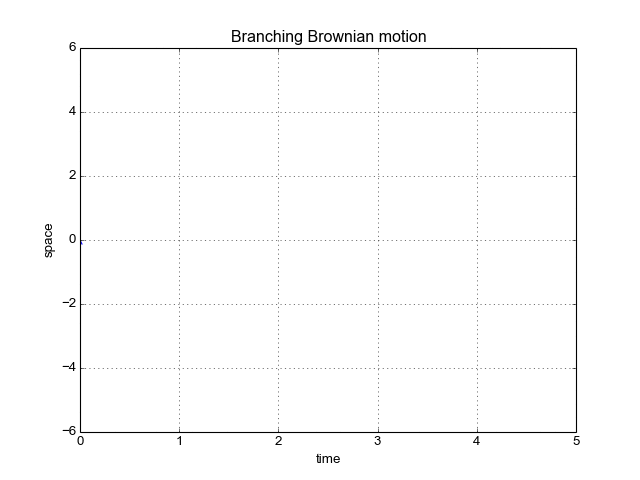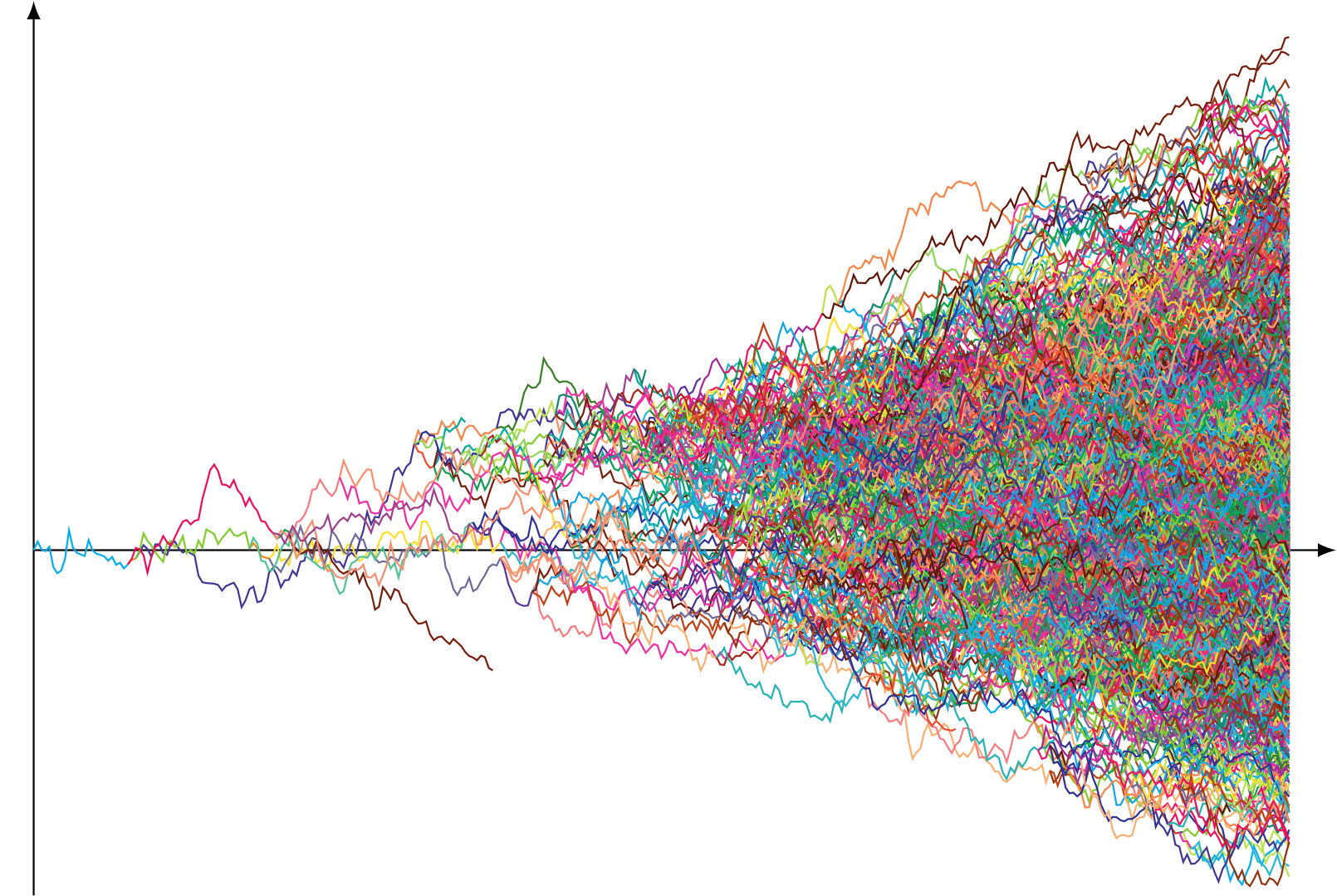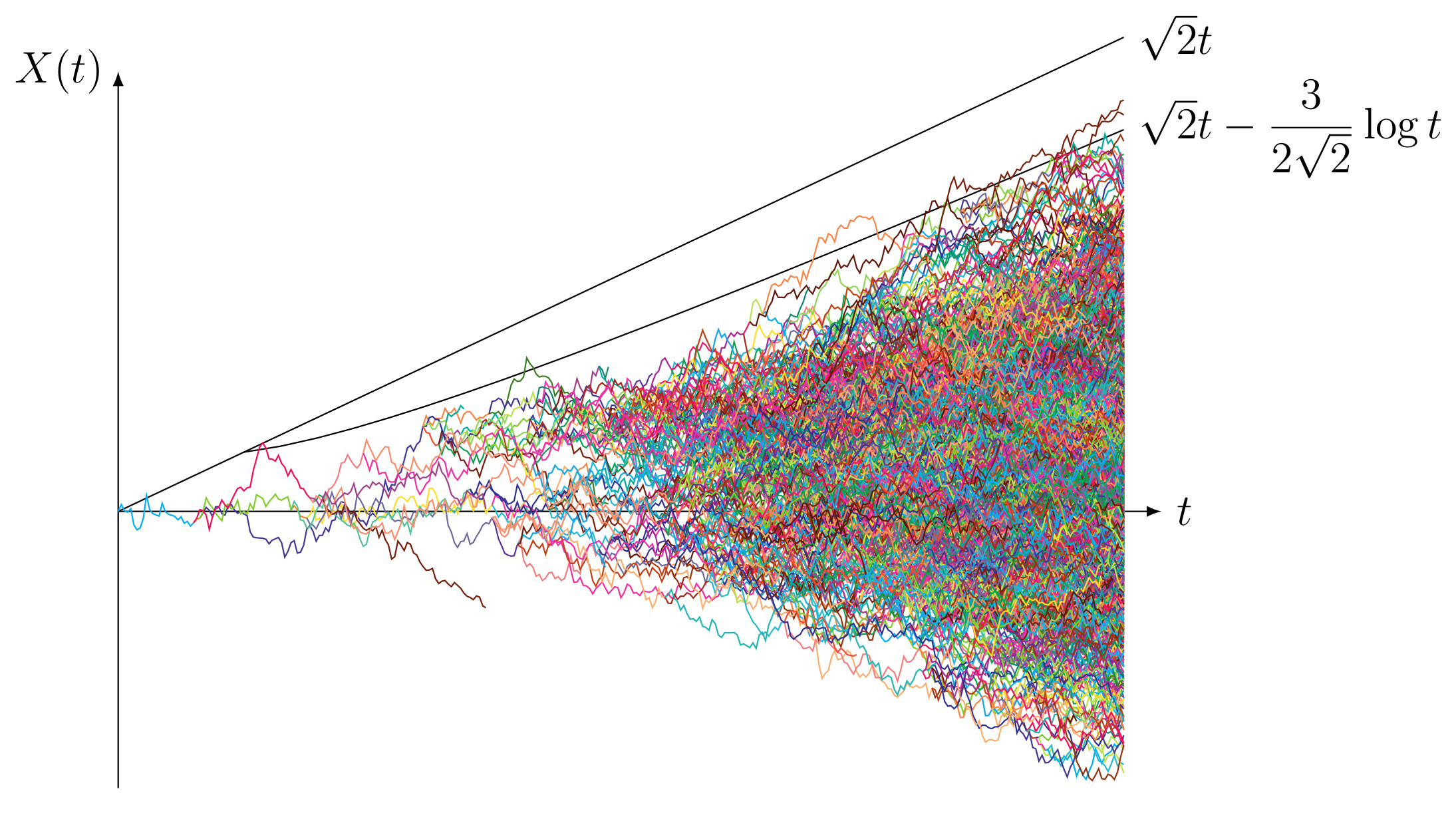Standard branching Brownian motion
Initially, there is one particle at the origin. It moves as a Brownian motion and, after an exponentially distributed time, it dies, giving birth to two children. These children start from its position and moves as independent Brownian motions during independent exponentially distributed times and then die, each giving birth to two children. And so on.

One can replace the binary splitting by a random reproduction: when a particle dies, it gives birth to a random number of children chosen according to a given reproduction law. For example, in the branching Brownian motion below, each particle has 0 child with probability 15%, 2 children with probability 65%, 3 children with probability 10% and 4 children with probability 10%. Hence, the mean umber of children is still 2. A vectorized version of this picture is available here.




